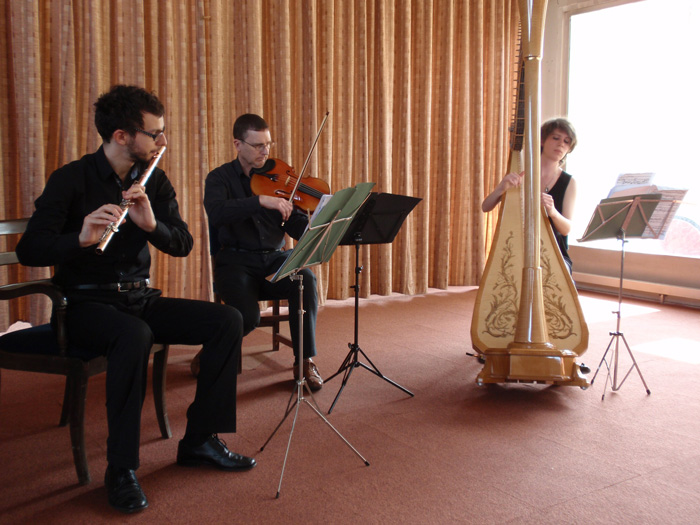|
Nigel Keay - Terrestrial Mirror for Flute, Viola and Harp
In Three Movements: 1. Moderato, (5' 10") 2. Larghissimo / Moderato / Larghissimo (6' 25") 3. Allegretto (4' 38") Total duration: 16' 13" |
|||||
Listen to Terrestrial Mirror for Flute, Viola and Harp: First Movement mp3, Second movement mp3, Third movement mp3. |
||||||
Terrestrial Mirror for Flute, Viola & Harp Terrestrial Mirror was written in 2004 and is a contemplation on the idea of voyage and discovery, in both the physical and musical worlds. Now residing in Western Europe and being originally from New Zealand, the voyage to the antipodes has become a regular occurrence for me. The title “Terrestrial Mirror" refers to the Pacific Ocean, in fact a phrase coined by the New Zealand author Michael King, where he suggests that the Pacific Ocean with its scattered islands is somewhat a reflection of the night sky: "the Pacific Ocean, with its widely spaced islands dotted across a vast surface, was a kind of terrestrial mirror for the galaxy, the Milky Way, which provided Polynesian sailors with stellar markers for celestial navigation." Each return to the Pacific evokes a contemplation of the multiple discoveries of New Zealand, first by Polynesian then European navigators. The choice of a work for flute, viola & harp grew out of working with Eric Kohenoff & Alix Couillaud on Debussy’s Sonate pour flûte, alto et harpe, and Jeffrey Harrington's Oneiromancer along with other repertoire of this instrumentation. |
In Terrestrial Mirror the flute represents the sky and wind, the viola represents the sea, and the third instrument, the harp represents the land. The analogy in the instrumentation is of course the flute often soaring in the higher registers with the viola providing a sinuous and cohesive thread of mobile tonality as opposed to the relatively more constrained tonal shifts of the harp due to its diatonic-based construction. The number three is also symbolic with its connection to navigation (triangulation). The programme of the voyage of discovery is as follows: the first movement symbolizes embarkation, initial excitement, determination, anticipation, progressive nostalgia. The second and most interiorised movement, which is really the heart of the work, represents dislocation, introspection, doubt, desperation. In a programmatic sense, if this movement represents the time at sea, it evokes a time prior to motorised vessels where on a voyage of several weeks one might encounter the many faces of the ocean; such as a calm, meaning minimal progress, or also a violent and agitated sea. These extremes are reflected in the music. The third movement represents discovery, arrival, celebration and the end of the voyage. |
|||||
